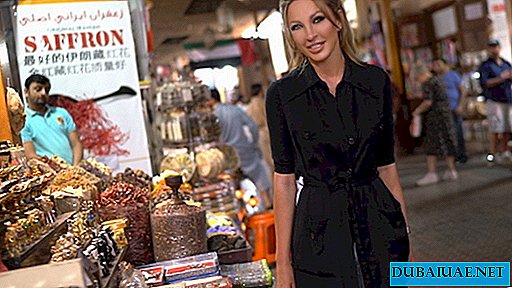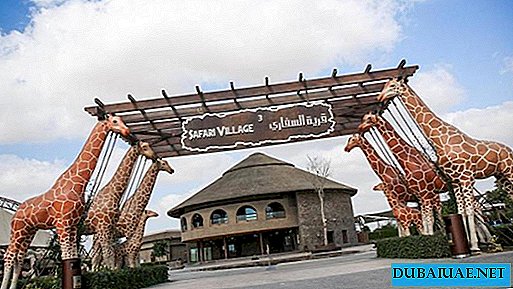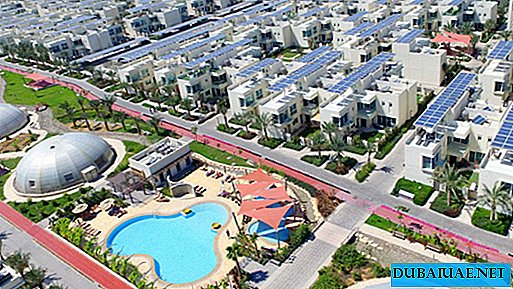 Yaroslav Kireev. A man passionate about traveling and off-road racing, the author of special reports
Yaroslav Kireev. A man passionate about traveling and off-road racing, the author of special reports
Arabs say that if a person has three things: a camel, a goat and “GHAF”, he will never die of starvation. THE PROPOSITION, OR WHAT IT IS NAMED IN THE UAE "GAF", IS AT LEAST POPULAR THAN A DATE FUSION. MORE THAN, SEVERAL YEARS OLD, A CAMPAIGN WAS ORGANIZED BASED ON PROPOSING THE STATUS OF THE NATIONAL TREE OF THE UAE. BUT JUDGING BY APPLYING PALM ON THE PAGES OF LOCAL PRINTED PRODUCTS, OUR PATRIARCH OF THE DESERT PLAYED RACE. IT DOESN'T LOSE IT ONLY IN MEDIA POPULARITY: DURING THE BUILDING BOOM IN LAST YEARS, THE NUMBER OF TREES SIGNIFICANTLY DECREASED, THE GROVES ARE CUT OUT OF THE WORLD. REDUCING THE NUMBER OF AQUARIUS LAYERS ALSO PLAYED ITS ROLE - OFTEN IN THE DESERT YOU CAN FIND DRIED GAF GROVES.
 Gough, or "Prosopis Cineraria" (Prosopis Cineraria), belongs to the genus of the mimosa family. His closest relatives are mesquite, calden, carob, African prose. Distributed in the UAE, and the Indian desert of Thar, where it is called Kandy (as well as sangri, themselves and sumri). On the territory of Rajasthan, these trees are planted in the desert, for binding sand.
Gough, or "Prosopis Cineraria" (Prosopis Cineraria), belongs to the genus of the mimosa family. His closest relatives are mesquite, calden, carob, African prose. Distributed in the UAE, and the Indian desert of Thar, where it is called Kandy (as well as sangri, themselves and sumri). On the territory of Rajasthan, these trees are planted in the desert, for binding sand.
The haf lives for a long time, launching the tentacle roots into the desert soil to a depth of 30 meters. It would seem that not a single tree can withstand almost fifty degrees of temperature, the lack of water and the scorching sun. But hafs are found even in Liv, the northeastern end of one of the largest deserts of Arabia - Rub Al Khali. Severe climatic conditions taught this tree to survive on saline soils. Long roots find water in the underground layers, and leaves and branches absorb moisture from the air.
In the vicinity of Dubai and Sharjah, the hafahs are not very beautiful - high temperatures, dust in the air and a small amount of moisture make them be in a state of almost complete conservation 8 months a year. Truly beautiful ghafs grow in Shveib and Sveikhan, near Al Ain, where aquifers feed the roots all year round: small dunes of red sand are interspersed with groves of 30-50 trees, with bright green crowns evenly trimmed along the lower edge - camels and goats do this job more accurately than any gardener.
Goughs are an important part of livestock diets. In a country where grazing boils down to the fact that the owners release cattle for "free bread - in the sands", the goughs become a real salvation from hunger. Rumor has it that the local population, before the Indians brought rice in large quantities in the UAE, prepared brian from gaff leaves. It is believed, of course, with difficulty, but after all, the fact that mushrooms grow in the desert, is also not believed much, but they grow.
Of the qualities useful to the human body, perhaps, it should be noted that the resin and bark of the gough tree are excellent antiseptics and anti-inflammatory drugs. The fruits of the tree are inedible, when ingested, they cause nausea and impaired liver function.
Gaff wood, along with palm wood, was widely used in the construction and decoration of traditional Arab dwellings - for the manufacture of crossbeams, beams, doors, chests.
But if the palm tree became a symbol of settledness for the Arabs, then the gaff is a real Bedouin tree, providing shelter and food for tired nomads.
UAE Date Palms
The earliest date palm dates back to 3000 BC. The first to grow them were the inhabitants of Mesopotamia. It is said that the history of the cultivation of date palms in the UAE dates back several millennia ago, when the tribes living in the territory lying along the Hajar Range, from the emirate of Ras Al Khaimah to Al Ain and in the oases of Liva, began to grow palm trees for the production of building materials and collecting dates. The first mention of date palms in Arabia dates back to 4000. BC. By the way, date palms were brought to Spain from Arabia. Before the start of the last Persian campaign, Iraq was the leader in the production of dates.
Before civilization came to the UAE in the form of roads, schools, hospitals and imported products, a palm tree was an indispensable source of shelter: from wood to traditional barastas — dried and interconnected palm branches used to erect walls of temporary dwellings and roofs. Such settlements have been preserved and are still being built in the settlements. It is worth leaving the city, as a dramatic change occurs with the dwellings: instead of glass and concrete, masonry or walls made of palm mats are almost like temporary buildings in Central Asia.
I must say that palm trees are rather capricious - in the UAE there are few palm trees growing without the participation of a person or a year-round source of water. If you ever drove through the village of Dade, visiting the eastern coast of the Emirates, you probably drew attention to the dried palm plantations: with a lack of water, they die very quickly. And then the path of such wood is only for fuel.
Today in the UAE, there are more than 60 million palm trees that bring more than 500,000 tons of dates every year. Dates, as you know, come in different varieties, and not just different degrees of drying.
Castawi (Khastawi 'Khustawi'; 'Kustawy') - small, soft and juicy dates, ideal for desserts.
Maktum (Maktoom) - variety imported from Iraq. These are large, red-brown fruits with a thick skin. Medium sweetness. Valued for their energy and vitamin properties.
Zahidi (Zahidi) - the most famous variety, of medium size, characterized by golden brown fruits. Belongs to the category of semi-dry dates. Collect them at different stages of ripeness: hard, semi-soft and soft. These dates are well kept, although they are of less culinary value than other varieties. Zahidi - the most common palm trees in the UAE.
In recent years, many new varieties of date palms have been imported from Saudi Arabia and Iraq - Kallas, Abu Maan, Nabut Saif, Sultana and several varieties of Bahri. Unfortunately, despite such an abundance of varieties, I often buy Californian dates of the Castavi variety and, strangely enough, also the Californian Maktum.
I've got somethIng you can never eat. (MarIlyn Manson)
Another plant that you stumble into in the desert all the time: the "Sodom apple", or the "Sodom apple" (Calotropis Procera (L.)), whose branches, as if covered with wax, with clusters of white-burgundy inflorescences triumphantly stick out from the sand. Desert residents bypass it - the plant is even more poisonous than a desert pumpkin ("desert apple"). Leaf juice causes edema and hyperalgesia (increased pain sensitivity) due to the histamine and prostaglandins contained in it. If you do not take an antihistamine and local anesthetic, the affected area will hurt for several hours.
The origin of the name of this plant has several versions. One of the first to describe it was the Jewish historian Josephus, who lived during the time of the Roman Empire. He described the destruction of Sodom and how the city would be demolished from the face of the earth by the wrath of the Lord: "To this day, the shadows of the destroyed city and the ashes on which the fruits have grown are visible, the colors as if intended for food, but tearing them, smoke will remain in your hands and ashes "(Josephus, Jewish Wars. Book IV, 8: 4).
Another explanation of the name comes from the deceptive appearance of the fruit: they look really full of moisture, although in fact only white fibers and poisonous seeds are hidden inside. By the way, this is one of the few plants whose fibers the Israelis are instructed not to use even for candle wicks.
The "Sodom apple" has become a metaphor for objects of desire that do not bring satisfaction, only disappointment. This plant is common in all desert regions of the Middle East: Syria, Israel, Lebanon, Iran, Saudi Arabia, United Arab Emirates, and parts of North Africa. At its core, the "Sodom apple" is a weed. It seems that the only positive qualities of this plant are that it binds the sands and gives a midday shadow.
True, Somali tribes, for example, have found use in the enzymes contained in the leaves - the juice of the plant is used to ferment milk in the production of cheese.
We tried to use the dry branches of the "Sodom apple" as fuel - but there was neither fire nor heat from them. They flare up and scatter in the wind with a thousand small fire flies.
Bitter gourds
Often, rolling in the desert, I see whole wild plantations of desert pumpkins. It is also called a “desert bitter apple” (Citrullus colocynthis (L.). Inexperienced tourists think that they are wild watermelons, and they playful little hands try to taste wild animals. It’s good if they are not greedy: the whole digestive system comes to a complete collapse for some time. "Desert apples" is the strongest vomiting and laxative at the same time. If you greed and eat a lot, then immobilization for several hours and wild pain in the intestines are guaranteed. In my opinion, only people who are deeply sick on their heads can be greedy for eating these fruits - they och Hb bitter. Itself did not eat, but the husband's friend, do not take my word, still tasted of the forbidden "apple." A friend later told us the sad story of how her faithful spent the night at some distance from the camp because of the already known.
The only eaters of these fruits are gazelles. Their body somehow neutralizes the alkaloids contained in the "apples". The local population uses "desert apples" for medicinal purposes. The active ingredients responsible for the healing properties are essential resins, phytostyrene glucoside (citrulol), other glucosides and protein-like compounds. The flesh and seeds of the “desert apple” are a popular folk anthelmintic, choleretic and emetic.
In India, a "desert apple" is planted with large plantations for "binding sand". Tribes living in the Sahara use the pulp of the fruit of the plant as a local cure for cancer (!). Sunflower seeds, separated from the poisonous, inedible pulp, are dried and husked, sitting in the evening on the mound. Balls rolled up from pulp and seeds can still be shoved in cupboards: the moth dies on the fly, and the cockroaches that have not died from diarrhea go to the neighbors and die there.
Desert rose - desert rose
 Desert - a creature quite complicated and far from empty. It cannot be conquered, all human achievements are shallow and illusory in comparison with eternity. With generous visitors, she generously shares her modest gifts - the infinity of the sky, silence, soft bends of the dunes, golden colors of sunsets and sunrises. With indifferent - scorching sun, hot sand and emptiness.
Desert - a creature quite complicated and far from empty. It cannot be conquered, all human achievements are shallow and illusory in comparison with eternity. With generous visitors, she generously shares her modest gifts - the infinity of the sky, silence, soft bends of the dunes, golden colors of sunsets and sunrises. With indifferent - scorching sun, hot sand and emptiness.
If you get to know the desert not from the car window, then on the sabers you can find "desert roses". These are not plants, but minerals that take bizarre forms. Such a rose is formed from gypsum, selenite and sand and is found on subs, which were once the seabed. Like everything in the desert, such flowers are fragile and crumble upon careless handling.
The nature of the UAE, despite all the talk about wealth and uniqueness, differs so far only in the latter: the flora and fauna are surprisingly adapted to the difficult conditions of survival. But despite the unique abilities, the animal and plant world is gradually losing ground before the onset of man. The population of the coastal zone and desert territories of the UAE leaves less and less space for wildlife.












